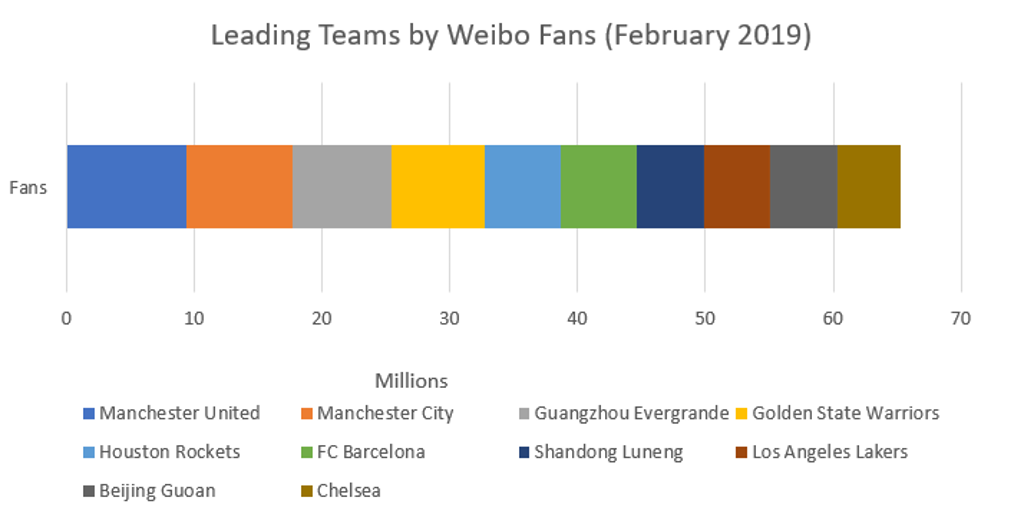How fans ‘consume’ sports is rapidly changing. Rising global internet connectivity rates, the increasing cost of sports broadcasting rights and the ever-growing role of social media platforms as hotbeds of fan engagement all highlight ‘over-the-top’ (OTT) live-streaming as the future of sports consumption. League stakeholders are leveraging the power of digital platforms to identify and reach the ‘future’ fan.
Social media live-streaming: reaching new fans, deepening experience with existing ones
The intersect of professional sports and social media is long-established. Platforms that facilitate interactivity and sharing user-generated content globally have created what has been called the ‘second screen’ or ‘second screen experience’. People are able to share real-time opinions irrespective of physical location.
Stakeholders in professional sports are confident that not only does the opportunity to live-stream games on social media represent a new broadcast avenue, but also an opportunity to enrich the experience and convert casual fans into core fans. Reducing the reliance on pure proximity to the action could prove especially valuable in new markets.
In terms of pushing sports content out to global audiences and simultaneously driving advertising revenues through live and on-demand sports video content, Facebook is in a dominant position. With the platform localised in 140+ languages and focusing on penetrating areas with low internet accessibility, the potential for driving engagement in professional sports is impressive.
Despite being blocked in China, Facebook has recently partnered with Beijing-based company Xiaomi to introduce a virtual reality headset in China, providing Facebook with a way to bypass internet regulators in the country. China aside, the social networking site has upwards of two billion users globally, but it has not all been plain sailing.
Facebook sustained criticism over its handling of personal data and how the spread of fake news across the platform has undermined democratic elections, particularly the 2016 US Presidential election. Sports streaming will help sustain user engagement through this difficult juncture.

Source: Euromonitor International
Twitter is instrumental in driving engagement and conversation in professional sports. It has been long established as a go-to ‘second screen’ for fans.
In 2017 Twitter was vocal about the platform’s advance into the streaming space, live-streaming sports, sports-related programming, concerts, news and other events. Several content tiers serve to keep users engaged on the platform.
Snackable content: Twitter’s NFL partnership is centred on dedicated programming, with live previews and highlights or ‘snackable content’ and a weekend show containing comprehensive pre-game updates.
Full match offer: A weekly regular season WNBA game will be live-streamed on Twitter (20 total per season) during the 2017, 2018 and 2019 seasons. Twitter will deliver live action of women’s basketball and the traditional ‘second screen’ fan conversation within one user interface.
Partial live-stream: Twitter’s partnership with the PGA Tour is innovative and will see 70 hours of content streamed across 31 tournaments. This includes showcasing the initial hours of play on the first day of a tournament before a redirect to PGA Tours dedicated streaming subscription service, PGA Tour Live, is initiated.
Back in 2016 Instagram announced that at the time, of the 500 million people using Instagram every month, 165 million were sports fans – meaning they follow at least one sports-related account. Owned by Facebook, Instagram has the highest user bases in the US, Brazil and Indonesia.
Compared to Facebook and Twitter, Instagram has more of an athlete focus. The Golden State Warriors breached the top 10 in terms of overall Instagram followers across all teams tracked – making the team a contender with the behemoths of European football.
Instagram has solidified its place as a hub for ‘athlete influencers’. The platform has been leveraged to drive social discourse, perhaps most notably witnessed during the Colin Kaepernick led protests that polarised stakeholder opinion. Athletes’ personal social media accounts are consistently proving to be platforms from which fan engagement can be extended beyond the field of play to political and social arenas.

Source: Euromonitor International
By 2030 China will be the second-largest market in the world, boasting 17.2% of the world’s population. The top 10 cities in China will all be home to more than 10 million people. Professional sports stakeholders realise that there is an expansion opportunity, yet cracking into the Chinese market via social media and live-streaming will not be so simple.
The State Administration for Press Publication, Radio, Film and Television (SAPPRFT) body shut down live video and audio streaming services on Weibo and several other sites in 2017, however, the social media platform still represents a major opportunity to generate interest in the region.
To supplement the increased access to global sports teams and leagues in the Chinese market there continues to be the deployment of digital strategies designed to unlock new fans. European football teams are leading the way in terms of the number of fans, outpacing many local teams competing in the promising Chinese Super League.

Source: Euromonitor International
For more information, visit Professional Sports: Attracting Fans and Delivering Growth Through Live-streaming
